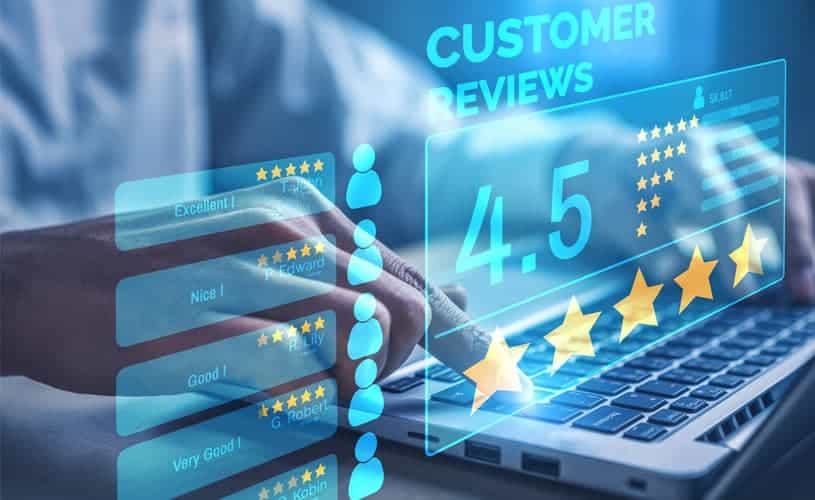How to Create a Perfectly Tailored Customer Experience
Traci Curran
August 16, 2022

Summary
This blog delves into strategies for crafting personalized customer experiences in the competitive e-commerce landscape, emphasizing the importance of unified customer profiles, data integration, and predictive analytics.
- Unified Customer Profiles: Integrating data from various touchpoints to create comprehensive customer profiles enables businesses to understand individual preferences and behaviors, facilitating personalized interactions.
- Predictive Analytics: Leveraging data analytics to anticipate customer needs and behaviors allows businesses to proactively offer relevant products and services, enhancing customer satisfaction and loyalty.
- Real-Time Data Integration: Implementing platforms that provide real-time data integration ensures that businesses can respond promptly to customer interactions, maintaining a seamless and personalized experience across channels.
E-commerce is a competitive field. Businesses are living in an era of hyper-personalization and omnichannel engagement, constantly vying for limited customer attention in a saturated market. As a result, optimizing marketing campaigns and driving qualified sales leads continues to be a challenge.
Having insight into each individual’s unique preferences, buying behavior, and expressed sentiment on the retail brand is essential for retailers to build as close to a complete picture of their customers as possible. In doing so, their marketing campaigns and sales channels are shaped in ways to make this achievable. However, many companies do not have access to a comprehensive view of their customer data. This is unsurprising, as customer data tends to be scattered, lying across various channels and sources. It would be challenging for a true 360-degree view to be sourced exclusively from internal data, and even harder to be found in a single system or business team.
To make the most of customer analytics and better serve customers, businesses need a platform that provides a unified view of the customer profile so businesses can optimize the shopping experience and improve customer retention levels.
Why Are Unified Customer Profiles Important?
Customers expect companies to draw them in and entice them to make a purchase. Businesses want to delight their customers, but before that’s possible, companies must be familiar with who their customers are and what types of content they are engaging with. As one example, research by McKinsey & Company shows new consumer groups are trying out digital products and services for the first time. And when it comes to business-to-business consumers, according to the McKinsey article from spring 2020, “our recent customer-behavior research shows that digital interaction with B2B customers is now two times more important than traditional channels—more than a 30 percent jump since before the COVID-19 crisis hit.”
In order to stitch together disparate data and get a complete customer profile, companies need a single SaaS customer analytics cloud platform. Once customer data is easily accessible, it’s much simpler to combine data from each customer touchpoint. This includes accessing historical transactions, data stored across CRM, ERP, and operational systems, and verifying a customer’s identity across multiple channels under various personas – aggregating all this into a comprehensible profile. A holistic customer profile allows you to understand your customers at each stage of their journey. From this, you can deliver personalized experiences for them and help increase customer satisfaction and grow customer loyalty over time.
How to Optimize the Shopping Experience
When shopping online, customers want to quickly and efficiently make purchases. Companies can meet these expectations and increase sales when they understand their customers well – and even better when they are able to create personalized experiences based on their buyer journey.
One way to optimize a customer’s experience while improving sales and customer satisfaction is to use data and market basket analysis to determine which products are commonly purchased together. With this insight, you can optimize product placement on your site or in-person, offer special deals, and create product bundles, which will encourage additional sales of similar product combinations.
Don’t Wait Until it’s Too Late: Learn to Improve Customer Retention
Losing customers has a huge impact on businesses, and most companies don’t know which customers are considering leaving until it’s too late. This leads to more than just a loss of revenue; it can also impact a company’s future growth. A study by Bain & Company found that increasing customer retention by only 5 percent opens up the potential for an increase in profits anywhere from 24-95 percent.
Existing customers are valuable assets and are more likely to purchase from you than new customers, so it’s crucial to develop strong customer loyalty. If you want to hold onto your customers and continue to build a stronger view of who they are, you’ll need to identify triggers and events that might influence them to make purchases elsewhere, thus increasing the accuracy of your customer churn predictions. With the right data, you can have insight into who’s most likely to leave. For example, once you’ve identified potential lost customers, you can send a promising retention offer to high-value customers, while deprioritizing the more unprofitable customers – exposing them to consider other competitors.
In a competitive market, businesses must find ways to stand out from the rest and deliver a memorable customer experience. How do you do that? You can accomplish this by using a platform that simplifies combining cross-channel data and sources in real time, giving your team a complete view of up-to-date customer information. Try this and you’ll see personalized customer experiences come to life and optimized ROI.
The Actian Customer Data Analytics Hub, powered by the Actian Data Platform, combines data integration and real-time analytics, making it easy to have a comprehensive view of your customer data across multiple channels and sources. You’ll be able to access, analyze, and unify buying behaviors while building valuable customer insights in real-time. More importantly, you’re building important relationships with customers, growing customer loyalty, and increasing sales along the way.
Subscribe to the Actian Blog
Subscribe to Actian’s blog to get data insights delivered right to you.
- Stay in the know – Get the latest in data analytics pushed directly to your inbox.
- Never miss a post – You’ll receive automatic email updates to let you know when new posts are live.
- It’s all up to you – Change your delivery preferences to suit your needs.






 Joshua Reyes
Joshua Reyes 























